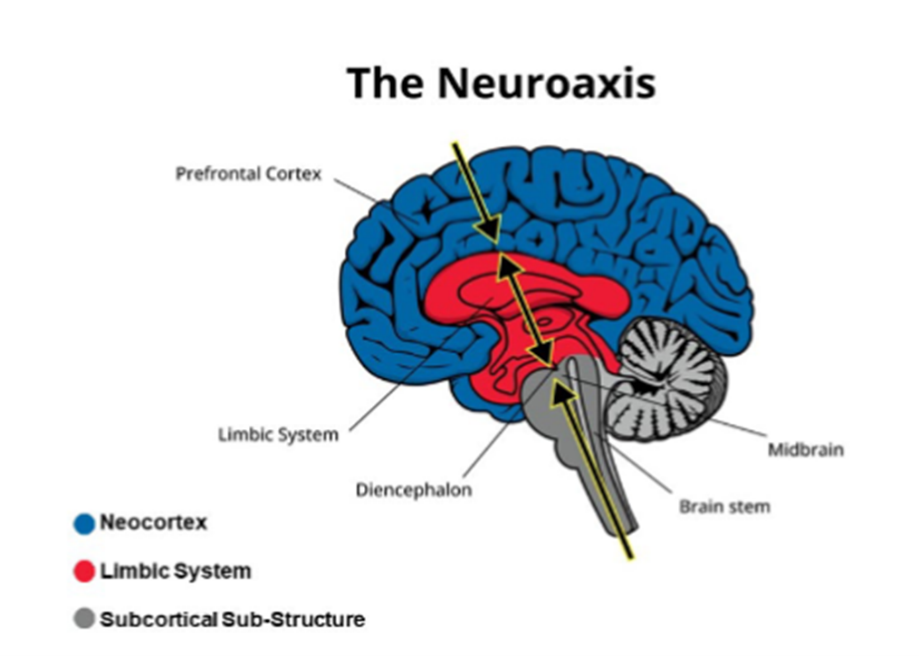The miracle of modern technology is making incredible advancements in the field of medicine and improving our everyday understanding of complex topics like brain science. As a neuroscience knowledge interpreter, I try to explain its relevance in situations where our actions/behaviours raise questions.
Not long ago, my writings focused on introducing what we called the Triune (3-part) Brain that differentiated between the Prefrontal Cortex (Blue), our Limbic System (Red), and our Brain Stem (Grey). I often described Limbic Brain reactions as Stress Responses or Stress Behaviours rather than Misbehaviours. These were also often described as being the result of a perceived threat.
In light of new scientific understanding about our brains, we now need to expand our concept of “threat.” We also need to recognize that these threats are often responded to subconsciously. Therefore, we don’t even really perceive the threat before our brain/body reacts to it.
Our bodies thrive in a state of balanced tension & energy. ie.) When we have the necessary energy to meet a challenge (homeostatic balance). Our bodies try to achieve this balance by burning energy (glucose), occasionally converting fat into energy at times. Brain cells (neurons) are an important part of the messaging system that tells our body when we need to burn, and/or replenish energy.
Threats can be either internal or external and result in excessive energy burning. An external threat could be a rustling sound in the bushes when walking home alone. On the other hand, an internal threat could be a feeling associated with anger, if a past anger experience resulted in negative consequences. Either way, our body’s autonomic nervous system begins to act long before we are even aware of it.
In so doing, neurons signal the level of natural endogenous opioids in our body begin to drop. Adrenaline begins to mobilize and burn more energy in preparation for action. It does so by taking it away from systems like digestion & circulation resulting in physiological distress because of the homeostatic imbalance created. These subconscious unpleasant sensations are electro-chemical signals in our nervous system that direct us to seek relief.
Here’s the important part… Relief can be achieved through one of two ways: 1) The release of endogenous opioids and oxytocin – hormones that play a role in social bonding, empathy, and human connection, or 2) by blocking an awareness of the aversive sensations with dopamine.
Cognitive Dynamics can help by introducing you to a Shanker Self-Reg® understanding of our Neurobiology.






Leave A Comment